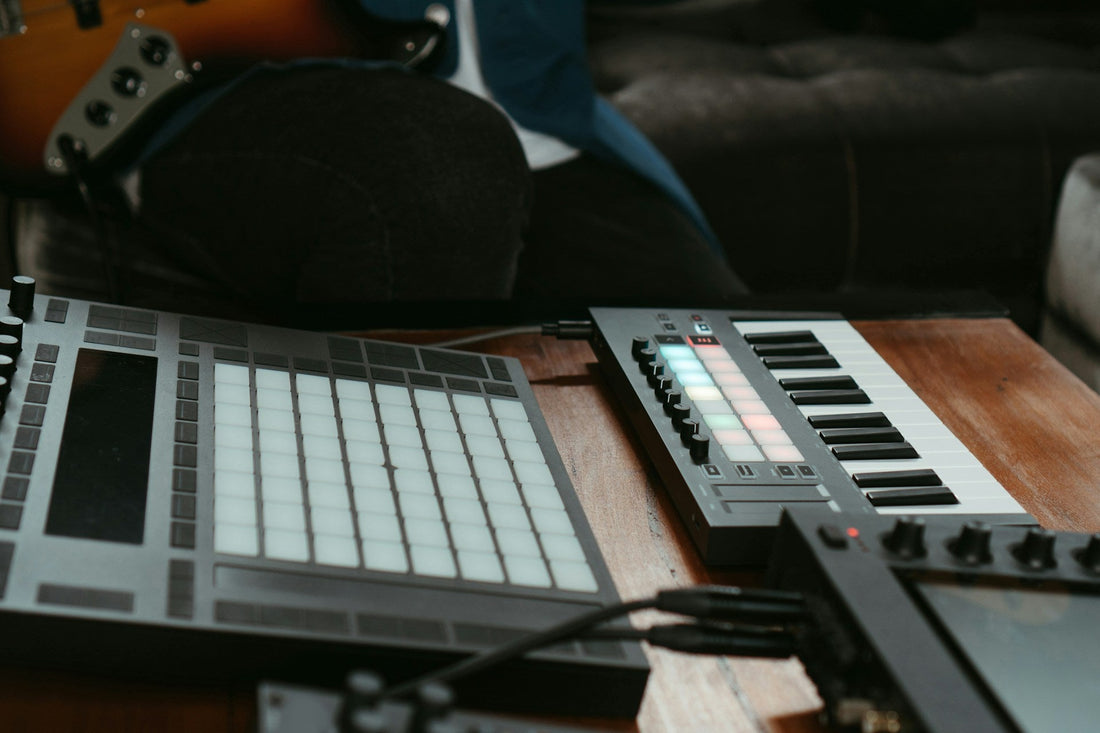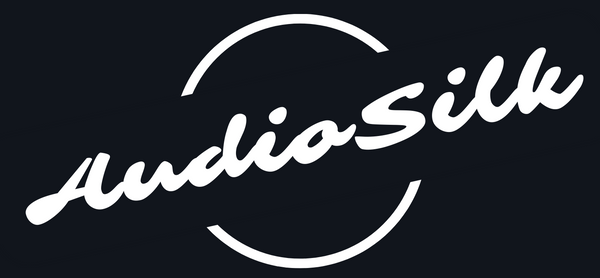
Best Beat Making Equipment for Beginners (2025 Buying Guide)
Share
Here's the uncomfortable truth about beat making equipment: you can spend $10,000 on gear and still make terrible beats, or spend $0 and create something that goes viral.
I've seen both scenarios play out hundreds of times. The difference isn't the equipment—it's understanding what you actually need versus what looks impressive in a studio photo.
After helping countless beginners navigate their first equipment purchases, I've learned that the right gear accelerates your learning curve without breaking the bank. The wrong gear sits unused, gathering dust while you watch more YouTube tutorials instead of actually making beats.
This guide cuts through the marketing hype and gives you honest recommendations based on what actually matters: getting you from idea to finished beat as quickly as possible.
Your DAW: The only essential purchase
Your Digital Audio Workstation is your complete recording studio, mixing console, and instrument library combined. Everything else is optional—this isn't.
FL Studio ($99-$899)
Best for: Hip-hop, trap, and beginners who want industry-standard tools
FL Studio earned its reputation by shaping the sound of modern rap. Producers like Southside, TM88, and Metro Boomin built careers on this platform. The step sequencer makes drum programming feel intuitive rather than technical, while the lifetime free updates policy means you invest once and receive every future improvement forever.
Start with: Producer Edition ($199) gives you everything needed for complete beats. The $99 Fruity Edition lacks audio recording, which limits you if you ever want to record vocals or live instruments.
Ableton Live ($99-$749)
Best for: Electronic music, live performance, and experimental producers
Ableton took a completely different approach, designing specifically for loop-based creation and real-time performance. The Session View lets you trigger loops and build tracks on the fly—perfect for discovering unexpected combinations that become your signature sound. Max for Live integration opens unlimited sound design possibilities without requiring expensive hardware.
Start with: Intro ($99) to test workflow compatibility, then upgrade to Standard ($449) once you're committed.
Logic Pro ($199, Mac only)
Best for: Mac users who want professional tools at entry-level prices
Logic delivers absurd value. The included sound library contains orchestral instruments, vintage synths, and drum samples that rival collections costing thousands separately. Apple's optimization means it runs efficiently on any Mac, from MacBook Air to Mac Pro. If you're already in the Apple ecosystem, Logic offers the most bang for your buck.
The catch: Mac-only, no Windows version exists.
Free alternatives that actually work
- GarageBand (Mac, free): Ships with every Mac and includes legitimate professional tools that have appeared on Billboard hits. Many producers start here before upgrading to Logic Pro.
- Cakewalk by BandLab (Windows, free): Full-featured professional DAW, completely free. Not a demo, not limited—actually free. Perfect for testing whether beat making clicks with you before investing money.
- My recommendation: Start with free options to confirm you'll stick with beat making. Invest in paid DAWs once you've completed 5-10 beats and know you're committed.
For the complete step-by-step process of actually making beats once you have your DAW, check out: How to Make Beats: The Complete Beginner's Guide.
MIDI controllers: Optional but valuable
MIDI controllers aren't essential, but they transform beat making from data entry into musical performance. The tactile response of physical pads and keys develops muscle memory that mouse-clicking never will.
Akai MPK Mini MK3 ($119)
What it offers: 25 keys, 8 velocity-sensitive pads, compact footprint
This mini controller packs professional features into a package that fits any desk. The pads respond to how hard you hit them, making drum programming feel like playing an actual instrument. You'll see this on countless producers' desks—from bedroom setups to Fred Again's live rigs—because it simply works.
When to buy: After completing your first 3-5 beats with just a mouse. You'll appreciate what it solves once you've experienced the limitations of mouse programming.
Arturia KeyStep ($119)
What it offers: 32 keys, built-in sequencer, better key action than MPK Mini
If you're more melody-focused than drum-focused, KeyStep's superior key feel makes a noticeable difference. The built-in sequencer and arpeggiator spark creative ideas that wouldn't emerge from manual programming.
Budget alternatives
Computer keyboard as MIDI input: Every DAW lets you use your QWERTY keyboard as a MIDI controller. Learn this first before buying hardware. You might discover you don't need physical gear yet.
Audio interfaces: Hear what you're actually creating
Your computer's built-in audio has two fatal flaws: poor sound quality and delayed response (latency). Audio interfaces solve both problems.
Focusrite Scarlett Solo ($120)
What it offers: Professional-grade conversion, low latency, clean preamp for recording
The Scarlett Solo transformed home recording by making professional conversion affordable. You'll immediately hear details in your beats that computer audio masked. The bonus: when you're ready to record vocals or instruments, you already have a quality preamp.
When to buy: Once you're consistently finishing beats. If you're still in the experimentation phase, your current setup works fine.
PreSonus AudioBox USB 96 ($100)
Budget alternative: Slightly lower specs than Scarlett but $20 cheaper. Perfectly adequate for beginners who won't notice the difference.
Studio monitors and headphones: The monitoring decision
You need accurate monitoring to make beats that translate to other speakers. But should you start with headphones or monitors?
Audio-Technica ATH-M50x ($149)
Best for: Apartment dwellers, night owls, and anyone who can't treat their room acoustically
These headphones deliver flat, accurate response that translates well. They're the safe choice when room acoustics would lie to you anyway. Every bedroom producer I know owns a pair.
The limitation: Extended headphone sessions cause ear fatigue. You'll need breaks.
KRK Rokit 5 G4 ($298/pair)
Best for: Dedicated spaces where you can play at reasonable volume
Studio monitors reveal spatial information that headphones can't replicate. The Rokit 5's extended bass response handles modern beat making's low-end demands. But here's the catch: untreated room acoustics will sabotage everything these monitors try to tell you.
Critical consideration: Monitors only work properly in acoustically treated spaces. Without treatment, you're hearing your room's problems more than your actual beat. Learn about where to place acoustic panels and how to install them before investing in monitors.
My recommendation: Start with quality headphones. Add monitors once you've treated your room's first reflection points with 4-6 acoustic panels.
Three budget tier recommendations
The $0 starter setup
- GarageBand (Mac) or Cakewalk (Windows): Free
- Computer keyboard as MIDI input: Free
- Existing headphones: Free
- Total: $0
Reality check: This setup has created chart-topping beats. Your limitation is skill and creativity, not equipment.
The $500 committed beginner
- FL Studio Producer Edition: $199
- Audio-Technica ATH-M50x: $149
- Akai MPK Mini MK3: $119
- Total: $467
What this gets you: Professional-grade tools that won't hold you back for years. Every component is industry-standard.
The $1,200 serious setup
- Ableton Live Standard or FL Studio All Plugins: $449-$499
- Focusrite Scarlett Solo: $120
- Akai MPK Mini MK3: $119
- Audio-Technica ATH-M50x: $149
- 4-6 AudioSilk acoustic panels: $300-400
- Total: $1,137-$1,287
What this gets you: Everything needed for commercial-quality productions. The acoustic panels ensure you actually hear what you're creating.
What to buy first (and what to skip)
Buy immediately:
- DAW (or start free)
- Decent headphones (even $50 ones beat laptop speakers)
Buy after 5-10 completed beats:
- MIDI controller (once you understand why mouse programming frustrates you)
- Audio interface (once you're consistently finishing projects)
Buy after 20+ completed beats:
- Studio monitors (after treating your room acoustically)
- Additional plugins (your DAW's stock plugins are more powerful than you think)
Skip entirely for now:
- Hardware synthesizers (software does everything for less)
- Expensive microphones (perfect your beat-making first)
- Mixing/mastering plugins (learn stock tools first)
The most common mistake? Buying gear hoping it'll make you better. It won't. Completing beats makes you better. Gear just makes the process more enjoyable once you know what you're doing.
The monitoring reality nobody talks about
Here's what the gear reviews won't tell you: expensive monitors in an untreated room sound worse than cheap headphones. Those $500 studio monitors everyone recommends? They're amplifying your room's acoustic problems more than helping you hear your beats accurately.
I've watched countless producers blame their mixes when the real problem was their room lying to them. Standing waves boost certain bass frequencies while canceling others. Flutter echoes mask subtle details. First reflection points color everything you hear.
This is why acoustic treatment isn't optional if you're serious about beat making. Four to six strategically placed panels transform monitoring from guesswork to confidence.
Understanding music theory like the circle of fifths becomes easier when you can actually hear harmonic relationships clearly. Avoiding common beat making mistakes requires hearing what's actually wrong, not what your untreated room tells you is wrong.
Invest in skill before gear
The producers you admire got there by completing more beats and learning from failures—not by owning more equipment. They developed their ear through thousands of hours of focused practice.
Start with the minimum that removes barriers between your ideas and finished beats. Add gear only when you know exactly what problem it solves. The best investment? Time spent making beats, not researching equipment.
Ready to hear your beats accurately? AudioSilk panels create the monitoring environment that lets your gear actually help you.
Shop AudioSilk Panels →
Tag us @audiosilkco with your setup evolution.



